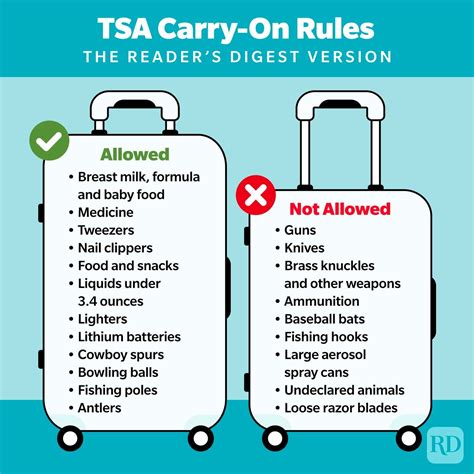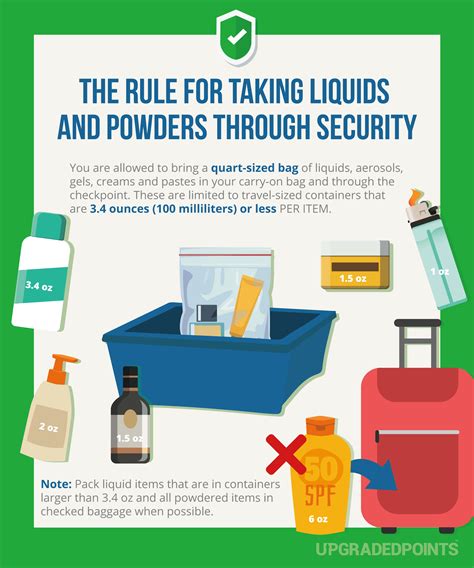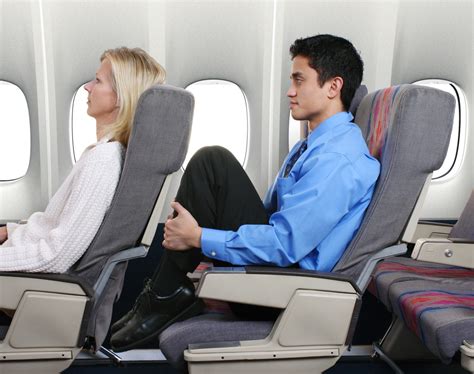
Starting immediately:
Travelers must now place personal electronic devices larger than a cell phone, such as laptops, tablets, and e-readers, in separate bins at airport security checkpoints nationwide, according to a new Transportation Security Administration (TSA) rule now in effect. This change, aimed at improving X-ray image clarity and streamlining the screening process, requires passengers to remove these items from their carry-on bags, a practice already common at many airports, but now formalized across all TSA checkpoints.
The TSA’s updated procedure mandates that all electronic devices larger than a typical mobile phone be screened individually, much like liquids and gels. This adjustment is intended to give TSA officers a clearer view of the contents of carry-on bags, reducing the likelihood of alarms and the need for secondary inspections. According to the TSA, this enhanced screening process will ultimately expedite the security line and improve overall safety.
“This change ensures a clearer X-ray image of electronics, which helps TSA officers detect potential threats more efficiently,” said a TSA spokesperson. “By separating these items, we reduce clutter in the X-ray image and minimize the need for bag rescreens.”
This new rule is not entirely unexpected. Over the past few years, the TSA has been piloting this procedure at various airports across the country. The positive results from these trials, including reduced alarm rates and faster processing times, led to the nationwide implementation of the policy. Many travelers may already be accustomed to this practice, as it has been common at larger, busier airports. However, the official rollout ensures uniformity across all TSA checkpoints, regardless of airport size or passenger volume.
The TSA advises travelers to familiarize themselves with the new guidelines before arriving at the airport. This includes knowing what types of electronic devices need to be removed and how to properly pack them for easy access. While the rule primarily targets larger electronics, it is generally a good practice to keep all electronic devices easily accessible in your carry-on.
The agency also recommends enrolling in TSA PreCheck, which allows eligible travelers to keep laptops and liquids in their carry-on bags and go through expedited security lanes. TSA PreCheck membership can significantly reduce wait times and make the screening process more convenient.
The TSA has been working to enhance airport security while minimizing disruption to travelers. The new electronics screening rule is part of a broader effort to leverage technology and improve procedures. The goal is to make the screening process more efficient and effective, ensuring that potential threats are identified quickly and accurately.
The rule change comes as air travel continues to rebound from the pandemic. With passenger numbers increasing, the TSA is focused on managing the flow of travelers while maintaining high security standards. By implementing consistent and efficient procedures, the agency aims to prevent long lines and delays, particularly during peak travel periods.
While some travelers may find the new rule inconvenient, the TSA maintains that it is a necessary step to enhance security. The agency encourages passengers to cooperate with TSA officers and follow their instructions. By working together, the TSA and travelers can ensure a safe and efficient airport experience for everyone.
The TSA’s official website provides detailed information about the new rule, including a list of electronic devices that must be removed from carry-on bags. Travelers are encouraged to visit the website or contact the TSA Contact Center for more information. The TSA also uses social media platforms to share updates and answer questions about security procedures.
This nationwide implementation represents a significant shift in how electronics are handled at airport security checkpoints. The TSA believes that this change will improve the overall security screening process and enhance the safety of air travel.
Background and Rationale
The TSA’s decision to implement this new rule stems from a desire to enhance threat detection capabilities and streamline airport security procedures. The increased use of portable electronic devices (PEDs) has presented a challenge for security screeners, as these devices can obstruct the view of other items in carry-on bags and potentially conceal threats.
X-ray technology is the primary tool used by TSA officers to screen carry-on baggage. However, when multiple electronic devices are clustered together in a bag, the resulting X-ray image can be difficult to interpret. This can lead to uncertainty and the need for secondary inspections, which slow down the screening process and increase wait times for passengers.
By requiring passengers to remove electronic devices and place them in separate bins, the TSA aims to create clearer, more detailed X-ray images. This allows officers to quickly and accurately assess the contents of each bag, reducing the likelihood of false alarms and the need for manual searches.
The TSA has conducted extensive testing and evaluation of this procedure at various airports across the country. The results of these trials have consistently shown that separating electronic devices leads to improved X-ray image quality, reduced alarm rates, and faster processing times.
In addition to enhancing threat detection, the new rule also aims to standardize security procedures across all TSA checkpoints. Previously, some airports may have required passengers to remove electronics while others did not. This inconsistency could lead to confusion and frustration for travelers. By implementing a uniform policy, the TSA hopes to create a more predictable and efficient security experience for all passengers.
Impact on Travelers
The new rule will undoubtedly have an impact on travelers, particularly those who are not accustomed to removing electronic devices from their carry-on bags. Passengers will need to be aware of the new requirements and plan accordingly when packing their bags.
The TSA recommends that travelers pack their electronic devices in an easily accessible location within their carry-on bag. This will make it easier to remove them at the security checkpoint and avoid delays.
Travelers should also be prepared to power on their electronic devices if requested by a TSA officer. This is a standard security procedure that helps to verify that the device is what it appears to be.
While the new rule may add a few minutes to the screening process, the TSA believes that the benefits of enhanced security and reduced alarm rates outweigh the inconvenience. The agency is committed to working with travelers to ensure a smooth and efficient airport experience.
For frequent travelers, enrolling in TSA PreCheck can significantly mitigate the impact of the new rule. TSA PreCheck members are not required to remove laptops or liquids from their carry-on bags, and they can use expedited security lanes. This can save a significant amount of time and hassle, especially during peak travel periods.
Technological Advancements and Future Implications
The TSA is continuously exploring new technologies and procedures to enhance airport security. The new electronics screening rule is just one example of the agency’s efforts to leverage technology to improve threat detection and streamline the screening process.
In the future, the TSA may implement even more advanced screening technologies, such as computed tomography (CT) scanners. CT scanners create three-dimensional images of carry-on baggage, providing TSA officers with a much more detailed view of the contents.
CT scanners are already being deployed at some airports, and the TSA plans to expand their use in the coming years. These scanners have the potential to further reduce the need for manual searches and improve the efficiency of the screening process.
The TSA is also exploring the use of artificial intelligence (AI) to analyze X-ray images and identify potential threats. AI algorithms can be trained to recognize patterns and anomalies that may be indicative of dangerous items.
By combining advanced screening technologies with intelligent software, the TSA hopes to create a more automated and efficient security system. This will allow officers to focus on the most challenging threats and reduce the burden on travelers.
The new electronics screening rule is a step in that direction, paving the way for more advanced security technologies and procedures in the future. The TSA remains committed to adapting and evolving its security measures to stay ahead of emerging threats and ensure the safety of air travel.
Comparison to International Standards
Airport security procedures vary widely from country to country. While the TSA’s new electronics screening rule may seem stringent to some travelers, it is not uncommon for other countries to have similar or even more restrictive security measures.
Many European countries, for example, require passengers to remove all electronic devices from their carry-on bags, regardless of size. Some countries also have restrictions on the types of electronic devices that are allowed in carry-on baggage.
In some cases, international airports may use more advanced screening technologies than those used in the United States. For example, some airports have deployed full-body scanners that can detect concealed objects under clothing.
The TSA works closely with international aviation security organizations to share best practices and coordinate security efforts. The goal is to ensure that airport security standards are consistent and effective worldwide.
While there may be differences in specific procedures, the underlying principle is the same: to protect air travelers from potential threats and ensure the safety of air travel.
Enforcement and Penalties
The TSA is responsible for enforcing the new electronics screening rule at all airport security checkpoints in the United States. TSA officers are trained to identify electronic devices that must be removed from carry-on bags and to ensure that passengers comply with the rule.
Passengers who refuse to comply with the new rule may be subject to penalties, including fines or denial of boarding. The TSA has the authority to detain and question passengers who are suspected of violating security regulations.
In addition to enforcing the new rule, the TSA also conducts random security checks to deter potential threats. These checks may involve searching passengers and their belongings, as well as using bomb-sniffing dogs and other detection methods.
The TSA works closely with local law enforcement agencies to investigate and prosecute individuals who attempt to violate airport security regulations. The goal is to send a clear message that any attempt to compromise airport security will be met with swift and decisive action.
TSA’s Communication Strategy
The TSA has implemented a comprehensive communication strategy to inform travelers about the new electronics screening rule. This strategy includes:
- Website updates: The TSA’s official website provides detailed information about the new rule, including a list of electronic devices that must be removed from carry-on bags.
- Social media campaigns: The TSA uses social media platforms to share updates and answer questions about the new rule.
- Press releases and media interviews: The TSA has issued press releases and conducted media interviews to raise awareness of the new rule.
- Airport signage and announcements: The TSA has placed signs and made announcements at airports to inform travelers about the new rule.
- Training for TSA officers: The TSA has provided training to TSA officers to ensure that they are knowledgeable about the new rule and can effectively enforce it.
The TSA is committed to providing travelers with clear and accurate information about airport security procedures. The agency believes that informed travelers are more likely to comply with security regulations and help to ensure a safe and efficient airport experience.
Controversies and Criticisms
While the TSA maintains that the new rule is necessary to enhance security, some travelers and privacy advocates have raised concerns about its potential impact on privacy and convenience.
Some critics argue that the rule is an unnecessary burden on travelers and that it may not significantly improve security. They also express concerns that the rule could lead to longer lines and delays at airport security checkpoints.
Privacy advocates have raised concerns about the potential for TSA officers to view sensitive information on electronic devices that are removed from carry-on bags. They argue that the TSA should implement safeguards to protect the privacy of travelers.
The TSA has responded to these concerns by emphasizing that the new rule is intended to enhance security and that it is committed to protecting the privacy of travelers. The agency has implemented procedures to minimize the risk of unauthorized access to electronic devices and to ensure that TSA officers are properly trained to handle sensitive information.
Long-Term Implications
The new electronics screening rule is likely to have long-term implications for airport security and air travel. The rule could lead to:
- Improved threat detection: By creating clearer X-ray images, the rule could help TSA officers to identify potential threats more quickly and accurately.
- Reduced alarm rates: The rule could reduce the number of false alarms, which can slow down the screening process and increase wait times for passengers.
- Faster processing times: The rule could help to streamline the screening process and reduce wait times for passengers.
- Increased use of advanced screening technologies: The rule could pave the way for the implementation of more advanced screening technologies, such as CT scanners and AI-powered image analysis.
- Greater standardization of airport security procedures: The rule could help to standardize airport security procedures across all TSA checkpoints.
The TSA believes that the new rule is a necessary step to enhance security and improve the overall airport experience. The agency is committed to working with travelers to ensure a smooth and efficient transition to the new procedures.
Alternatives Considered
Before implementing the nationwide policy, the TSA considered various alternatives to address the challenges posed by electronic devices in carry-on baggage. These alternatives included:
- Enhanced training for TSA officers: While training is essential, it alone was deemed insufficient to overcome the limitations of X-ray technology when dealing with cluttered bags.
- Investing in more advanced X-ray equipment at all airports: While CT scanners offer superior imaging, the cost and logistical challenges of deploying them at every checkpoint nationwide made this option impractical in the short term. The TSA is actively deploying these technologies as funding and infrastructure allow.
- Randomized secondary screening of electronic devices: This approach was considered too inconsistent and potentially disruptive to the flow of passengers.
- Developing new packing guidelines for travelers: While educational initiatives are helpful, the TSA determined that a mandatory procedure would be more effective in ensuring consistent screening.
Ultimately, the TSA concluded that requiring the separation of electronic devices was the most effective and feasible approach to improving X-ray image clarity and enhancing threat detection capabilities. The decision was based on data collected from pilot programs and a comprehensive assessment of the various alternatives.
Economic Impact
The economic impact of the new TSA rule is expected to be minimal. While there may be some initial costs associated with implementing the new procedures, such as purchasing additional bins and providing training to TSA officers, these costs are likely to be offset by the benefits of enhanced security and reduced alarm rates.
The rule could also have a positive impact on the economy by reducing the risk of terrorist attacks and other security incidents. A secure and efficient air transportation system is essential for economic growth and development.
The TSA is committed to minimizing the economic impact of its security measures. The agency works closely with airlines and other stakeholders to ensure that security procedures are implemented in a cost-effective manner.
FAQ Section:
1. What types of electronic devices need to be removed from my carry-on bag?
The TSA requires you to remove any electronic device larger than a cell phone from your carry-on bag and place it in a separate bin for screening. This includes laptops, tablets, e-readers, and larger gaming consoles. If you are unsure if an item needs to be removed, it’s always best to err on the side of caution and remove it. According to the TSA’s official website, the general rule of thumb is, “If it’s bigger than a cell phone, take it out.”
2. Do I need to remove my headphones or charging cables?
No, headphones and charging cables do not need to be removed from your carry-on bag. The requirement focuses on larger electronic devices that can obstruct the view of other items in the bag. However, it is advisable to keep these items organized and easily accessible in case a TSA officer requests to inspect them.
3. Will this new rule make security lines longer?
The TSA anticipates that the new rule may cause some initial delays as travelers adjust to the new procedures. However, the agency believes that the long-term benefits of enhanced security and reduced alarm rates will outweigh any temporary inconvenience. The TSA recommends arriving at the airport early to allow ample time for security screening. Enrolling in TSA PreCheck can also significantly reduce wait times. “We are always looking for ways to improve the security screening process,” a TSA representative stated, “and we believe this new rule will ultimately make the lines more efficient.”
4. What if I have a medical device that is larger than a cell phone?
Passengers with medical devices larger than a cell phone should inform a TSA officer before beginning the screening process. Medical devices are subject to screening, but TSA officers are trained to handle them with care and respect. It is helpful to have documentation from your doctor explaining the medical necessity of the device. The TSA provides specific guidance on its website for traveling with medical devices.
5. How does this rule affect TSA PreCheck members?
TSA PreCheck members continue to enjoy expedited screening benefits, including not having to remove laptops from their carry-on bags. However, the rule applies to non-PreCheck passengers. Joining TSA PreCheck can significantly streamline your airport experience and mitigate the impact of this and other security measures.
![Bob’s Red Mill’s New [Product] Is a Family Favorite: Gone in Days!](https://infoduniaku.com/wp-content/uploads/2025/06/unnamed-file-279-150x150.jpg)








